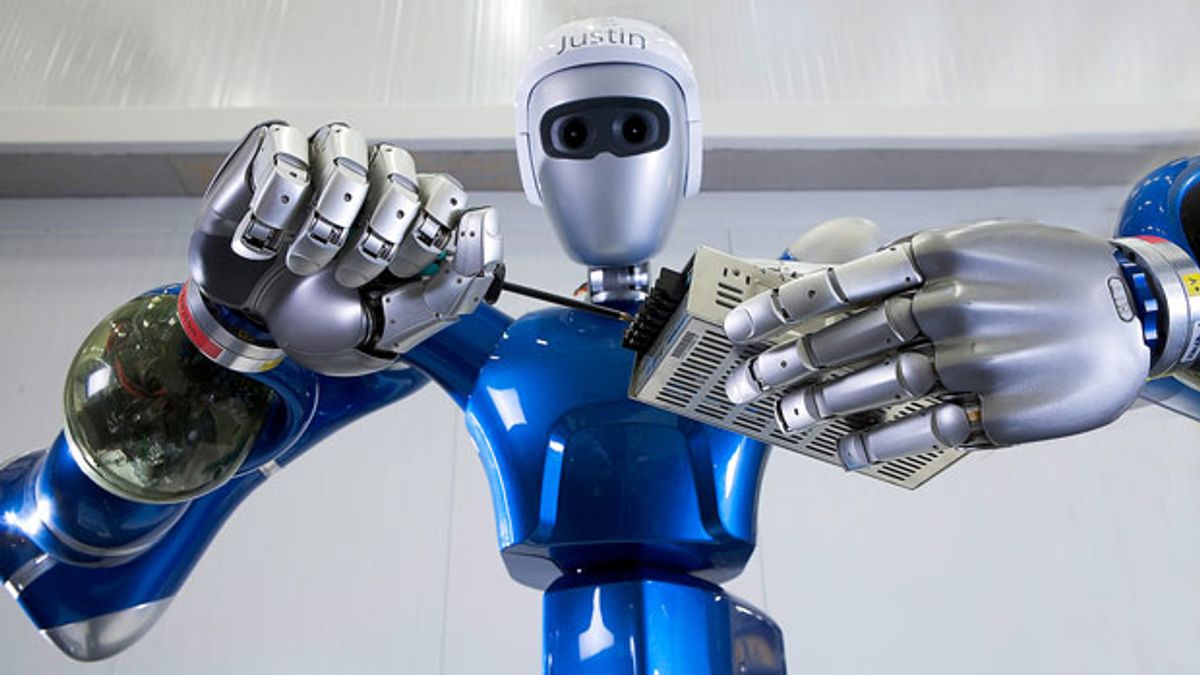If your satellite isn't so far gone as to require harvesting and zombification by DARPA but could still use a tune-up, SpaceJustin the Space Robot is here to help. Or at least, they're working on it over at DLR.
To feel with your own hands what the robotic hand is touching. To see exactly what the robot's eyes are seeing. Researchers from the Robotics and Mechatronics Center at the DLR site in Oberpfaffenhofen can now operate their SpaceJustin robot remotely; they not only control the robot, but receive feedback as well. In the future, this interactive service can be used when SpaceJustin is in space repairing satellites, operating switches or exchanging modules.
The general goal is the design of a new generation of multisensory light-weight robots for space applications which are operable by astronauts as well as from groundstations, based on powerful telerobotic concepts and man-machine-interfaces.
It's like you're getting hugged by giant robot arms! Aww!
The appeal of humanoid robots in space isn't just that they can take over some tasks from humans to free the humans up to do other things, as with NASA's Robonaut on the ISS, but it's that we can potentially use robots to take over from humans completely in many common scenarios. Humans are not at all designed for space travel: we're soft, we're squishy, and we're full of things that will freeze or explode when exposed to what you'll typically find in space. We can make it work with very complicated equipment, but it's expensive, and dangerous.
We're not saying that humans don't have a place in space; we absolutely do. We're explorers, and we belong up there and beyond. But, having humans in space doing stuff that could be done by robots is a waste of both money and talent. Humans should be doing science and going to Mars, and robots should be doing ISS maintenance and fixing satellites. The frustrating part at the moment is that getting robots to the point where they can start contributing in a meaningful way is a very slow and careful process, and Robonaut (for example) can only really be tested in space with constant human supervision, and the human astronauts are too busy doing tasks that should be done by robots to get the robot that could free up time for them to work on tasks like robots, to work on the robot.
Um, I'm pretty sure that all just made sense.
[ DLR ]
Evan Ackerman is a senior editor at IEEE Spectrum. Since 2007, he has written over 6,000 articles on robotics and technology. He has a degree in Martian geology and is excellent at playing bagpipes.



